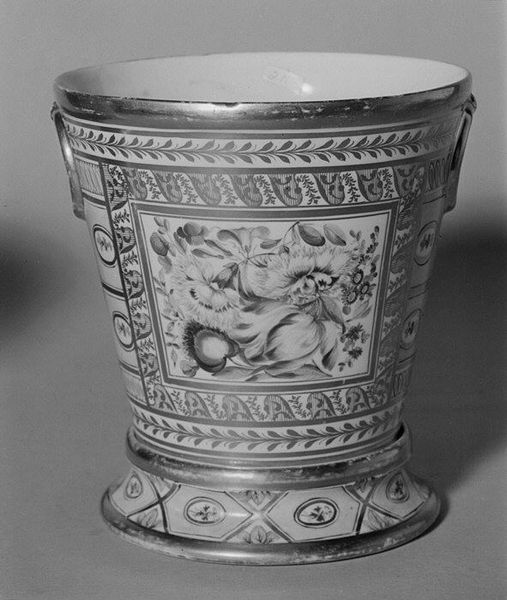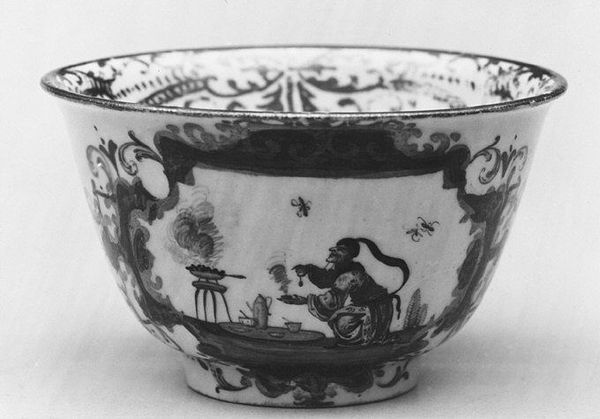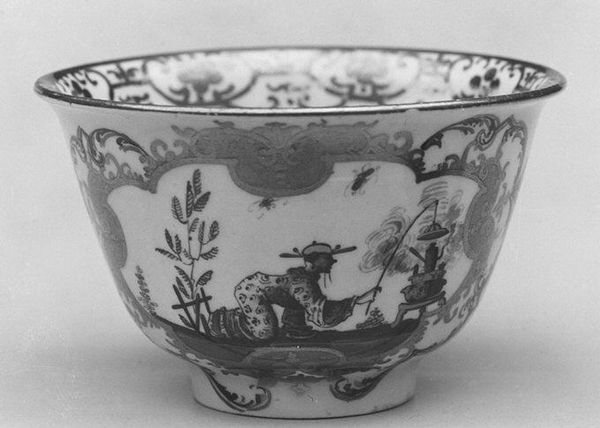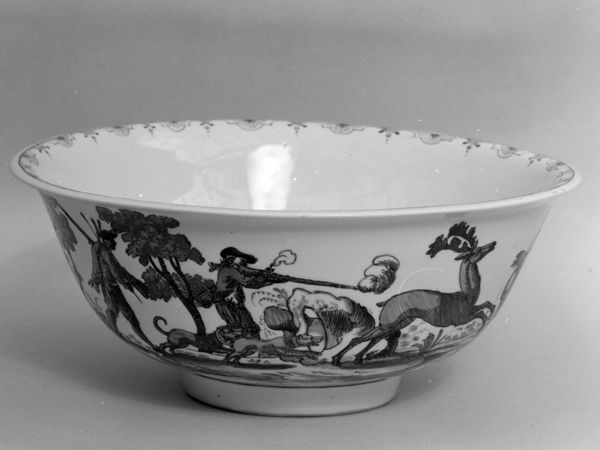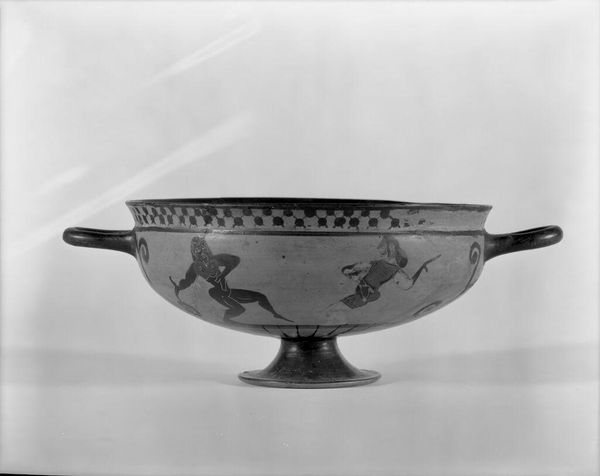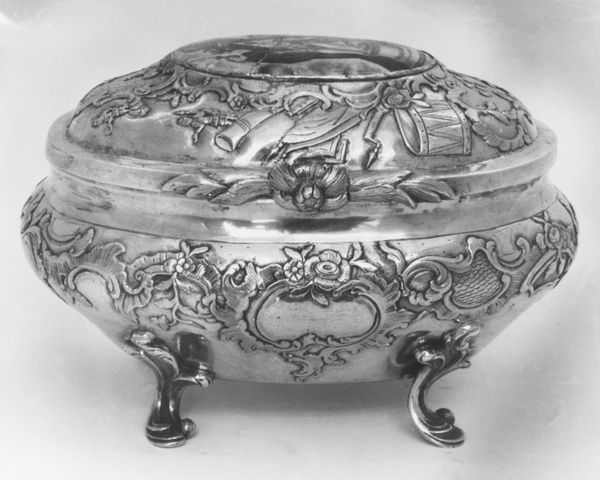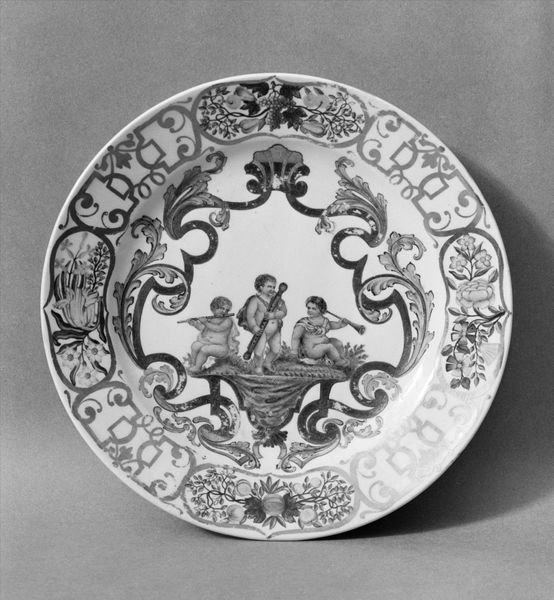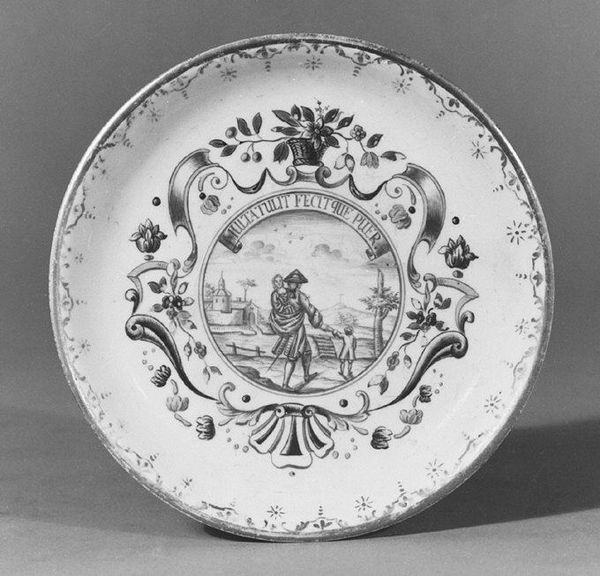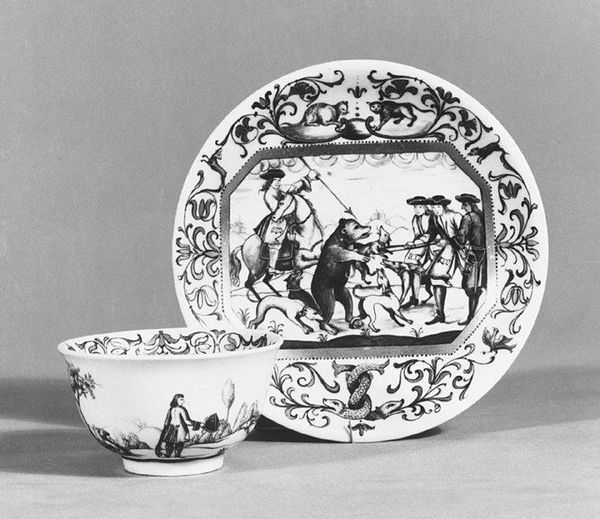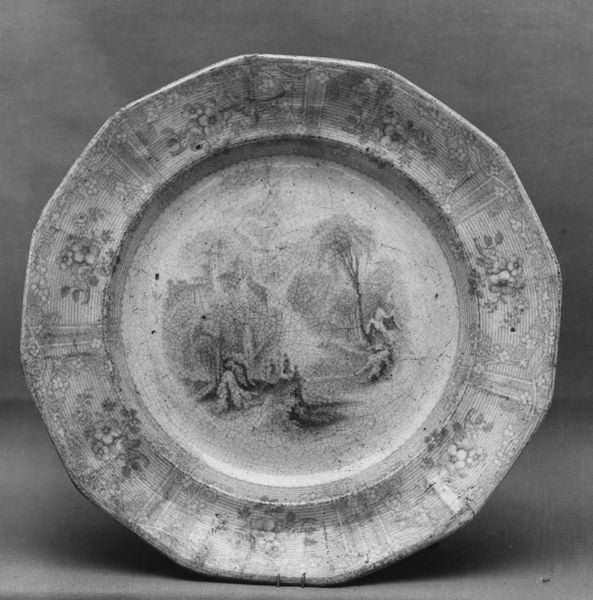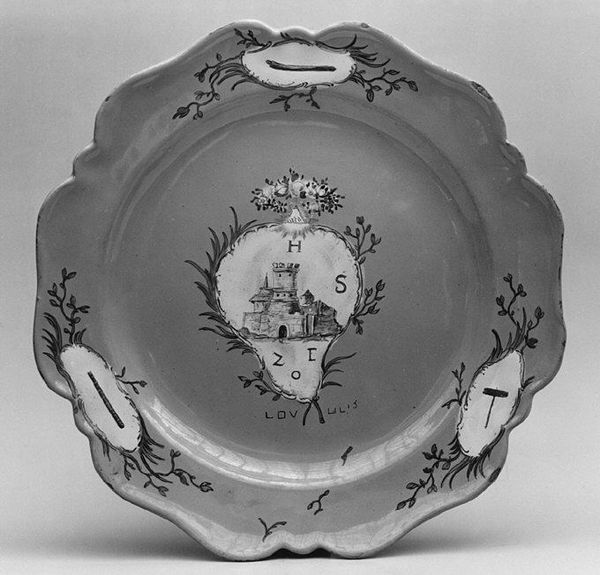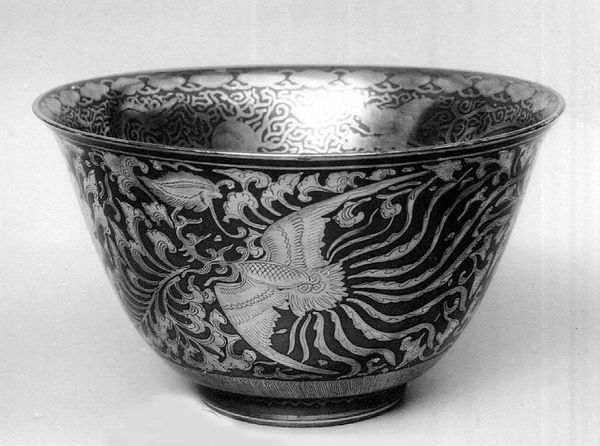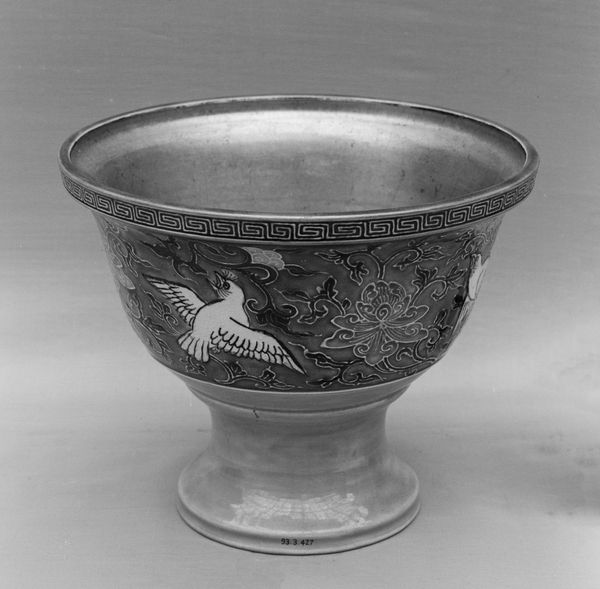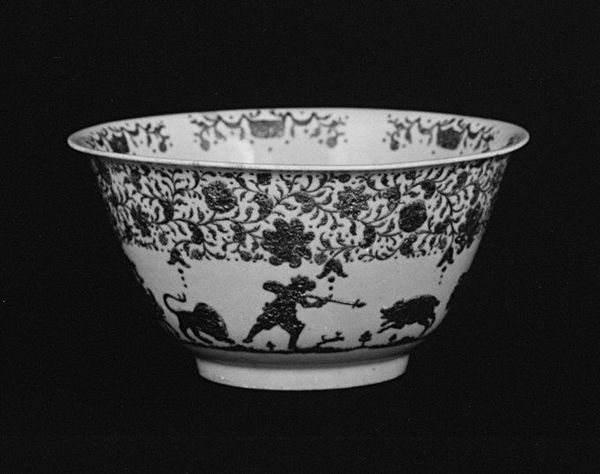
ceramic, sculpture
#
baroque
#
ceramic
#
figuration
#
sculpture
#
genre-painting
#
decorative-art
Dimensions: Overall: 3 5/16 × 10 3/8 in. (8.4 × 26.4 cm)
Copyright: Public Domain
Curator: Here we have what is known as a Tazza, dating back to the latter half of the 17th century. Currently residing at the Metropolitan Museum of Art, it's categorized as decorative art, a marvelous example of baroque ceramic sculpture. Editor: The first word that springs to mind is "theatrical." Something about the slightly bulbous figures marching across its surface reminds me of Commedia dell'Arte characters on their way to perform some slightly absurd comedy. It also makes me strangely hungry... am I the only one getting dessert vibes? Curator: Ah, the appeal to our baser instincts, right? These pieces often depicted genre scenes, little snippets of everyday life elevated by artistry. It’s true, the figures do seem a bit like players in a stage production, wouldn't you say, poised for some dramatic encounter, though the artist who made this beautiful artifact is, sadly, unrecorded. Editor: Absolutely! The attire is so deliberately… "extra." Who wears breeches that balloon out quite so dramatically unless they're trying to make an entrance? It’s a performance of status, wealth, a real claim to power through excess, captured perfectly on this elevated stage for dessert, of course! But, thinking about the history, there’s also the not-so-comical theatre of class and social performance happening every day beyond the artwork itself... Curator: That is a potent point, truly, as ceramics like this, especially then, declared luxury; these sort of ornamented creations weren’t just about pleasure and entertainment but prestige. Do you think this specific portrayal challenges social hierarchies? Editor: Perhaps gently mocks them. There is a slight element of caricature about these figures; the viewer perhaps delights in these portly men struggling up this snowy hill. However, I am not naive enough to ignore who this artifact was probably designed for. Perhaps the caricaturization functions to give those who are actually in power a sense of being benevolent enough to be amused by those figures represented on the piece, maintaining the status quo… Curator: That is an outlook to mull over; I perceive your understanding provides valuable perspectives to my own thoughts. Editor: It is only an opinion. Thank you for indulging me.
Comments
No comments
Be the first to comment and join the conversation on the ultimate creative platform.
